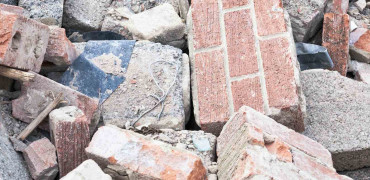The last few years have seen huge disruption in many aspects of our lives and the construction industry is no exception.
The building materials shortage began and very much continues. Simply put, a surge in the demand for building supplies led to shortages which quickly led to escalating prices.
Anyone that considers the construction crisis to be over need look no further than the invasion of Ukraine by Russian forces. The impact of which will be felt far and wide.
Brexit, although not at the forefront of the news, is still causing uncertainty
Huge difficulties
As 2021 progressed the construction industry saw huge disruption. Both Brexit and Covid-19 are responsible for the low supply and high cost of goods and shipping of building materials.
This unfortunate combination of factors has led to huge difficulties within the normally successful and reasonably smooth supply chain.
As we see materials from overseas jumping in price we also see huge delays in shipping and transport. For example the price of wood and timber has inflated by a shocking 120%, supplies that would normally take 2 days to ship are taking almost 2 weeks!
Roofing supplies, cement and steel are also in short supply and are impacting the construction industry monumentally. According to the National Federation of Roofing Contractors, lead times remain lengthy.
For example both concrete and clay roof tiles the average lead time is 20-24 weeks but in some cases can be as long as 36 weeks!
Severe shortages
The construction materials shortage can be traced back to our increase in building and home improvements during the first lockdown. In turn this extra demand led to a slowdown in production across many factories in the European Union, exacerbated by the pandemic.
The combination of both Covid and Brexit also contributed to the severe lack of lorry drivers and it is estimated that there is a shortage of more than 850,000 HGV drivers in the UK alone even now.
In the UK our labourers and construction workers are overwhelmed with work and we will continue to see labour rates reaching high levels.
Brexit, although not at the forefront of the news, is still causing uncertainty. Both new regulations and lengthy shipping times are making building materials scarce and complicated to obtain.
Concrete supply chains
We are all very aware of the devastating situation in Ukraine unfolding before our eyes.
Russia is a major producer of both aluminium and copper which has already seen a hefty surge in prices over the last couple of years. Material containing or forged from these two metals will see products soar in the weeks and months to come.
In the future if we are to rely upon timber as a sustainable building material rather than carbon intensive alternatives such as cement then we also need to put in place a sustainable and ‘concrete’ supply chain.
Covid restrictions have had a limiting impact on all construction supplies and many experts feel that we are not out of the woods yet! Globally Covid continues to surge and may do so for many years to come.
Climate crisis
Climate change will in the future have a direct impact on timber, and we will need to look seriously at our forestry requirements if we are to mitigate any shortages.
It might be considered that sourcing our materials from overseas may be precarious. Architects and specifiers need to look closer to home in order to avoid extended lead times and increased shipping prices.
By sourcing locally we can also support our British suppliers in conjunction with reducing our carbon footprint. In times of such uncertainty both globally and environmentally, surely we can see a change in habits is imperative.
It is clear that we are going to have to shift our energy supplies from Russia, it is clear that we need to be producing our own sustainable energy sources and it is also clear that our manufacturing of construction materials also needs to return home.
So what are we waiting for?
Kirsty Hammond is editor of Specifier Review




